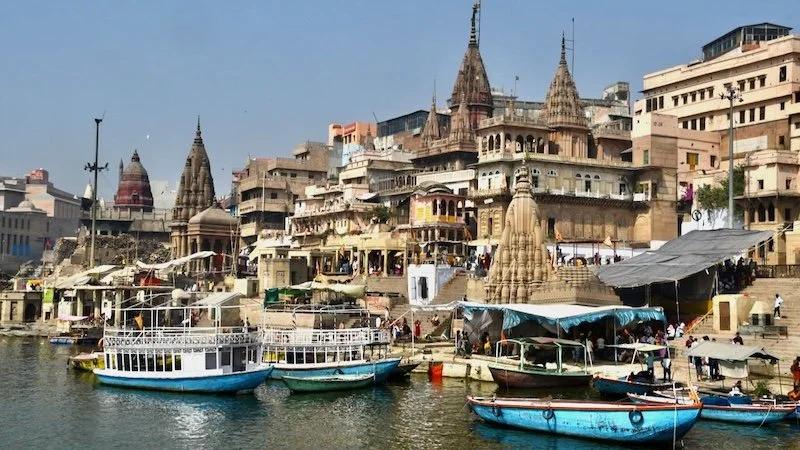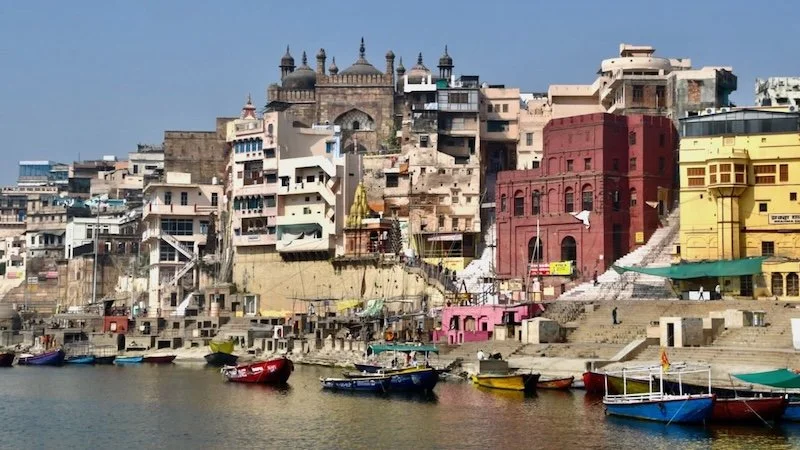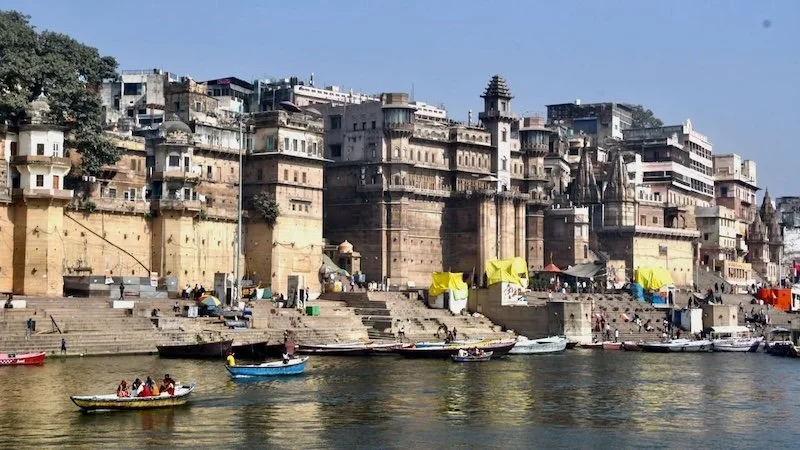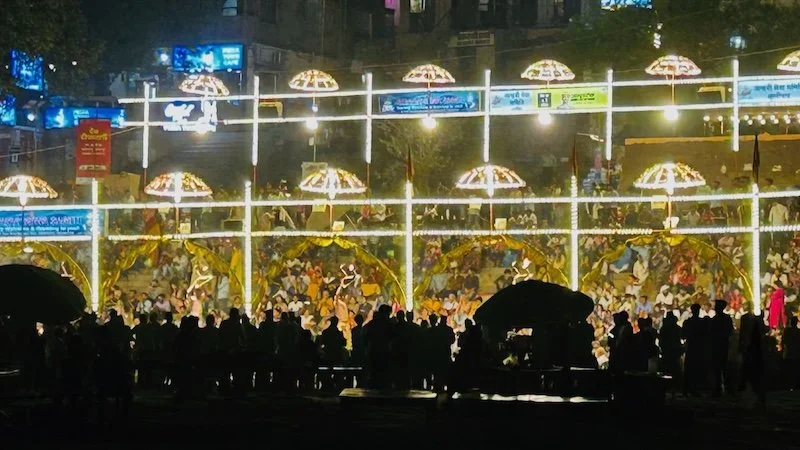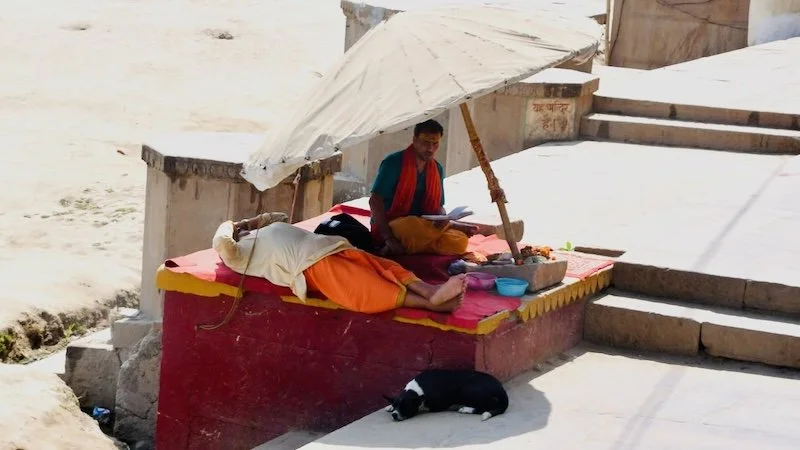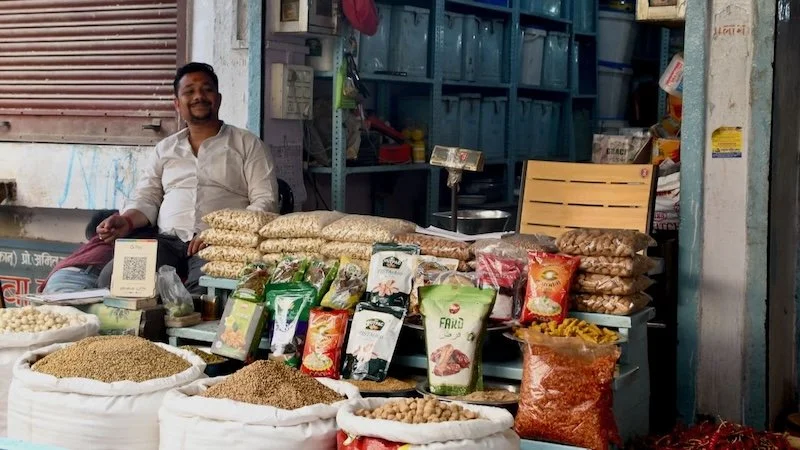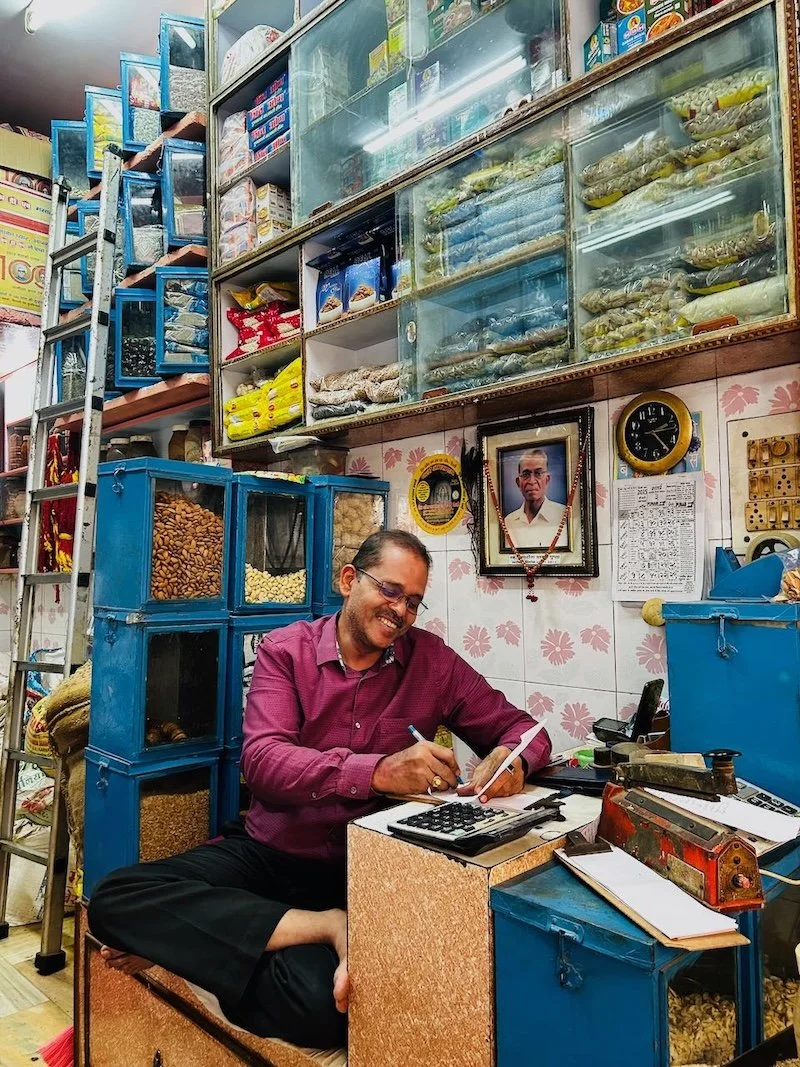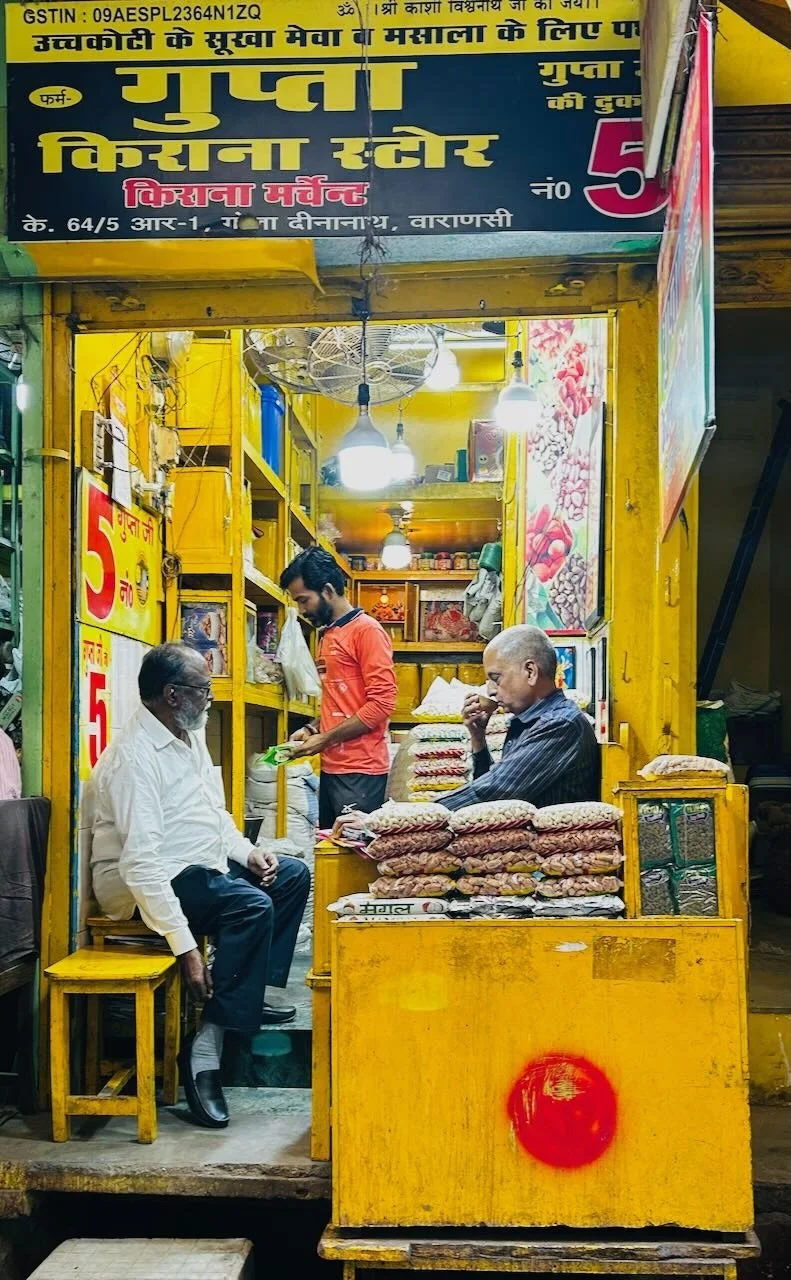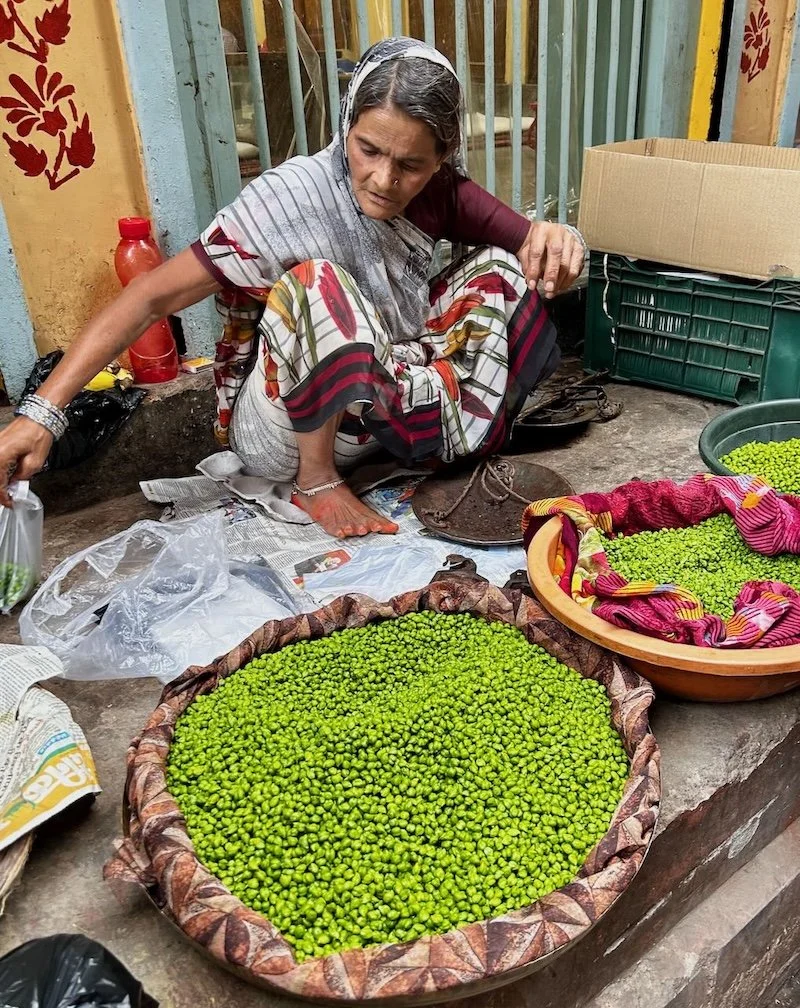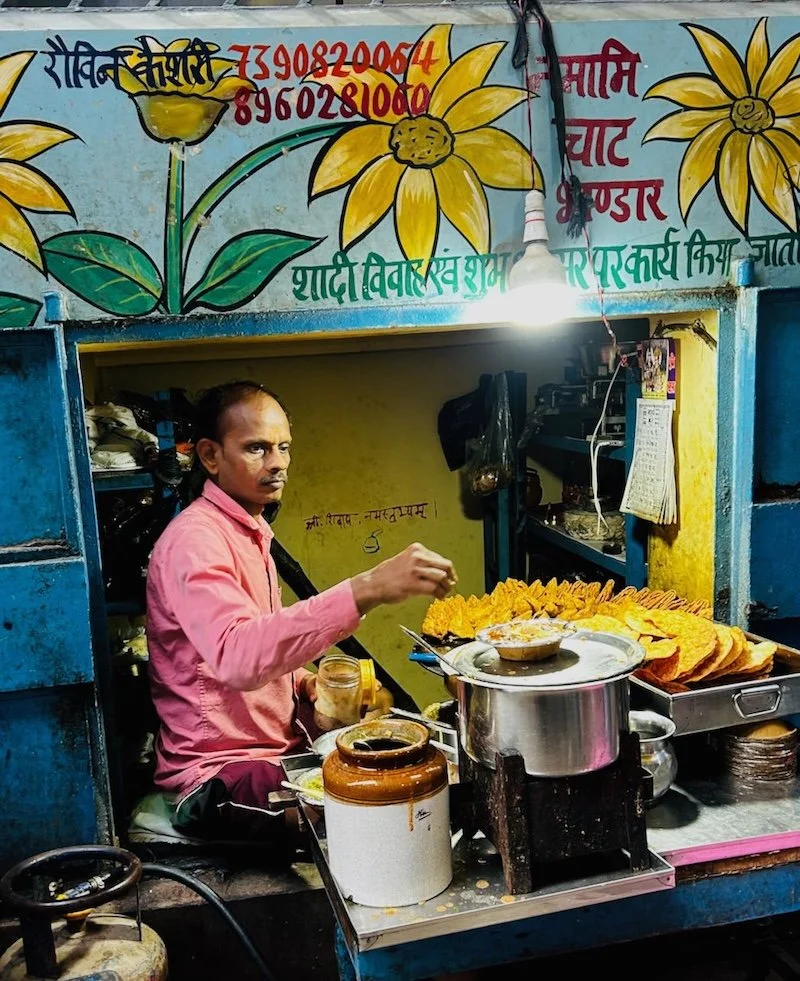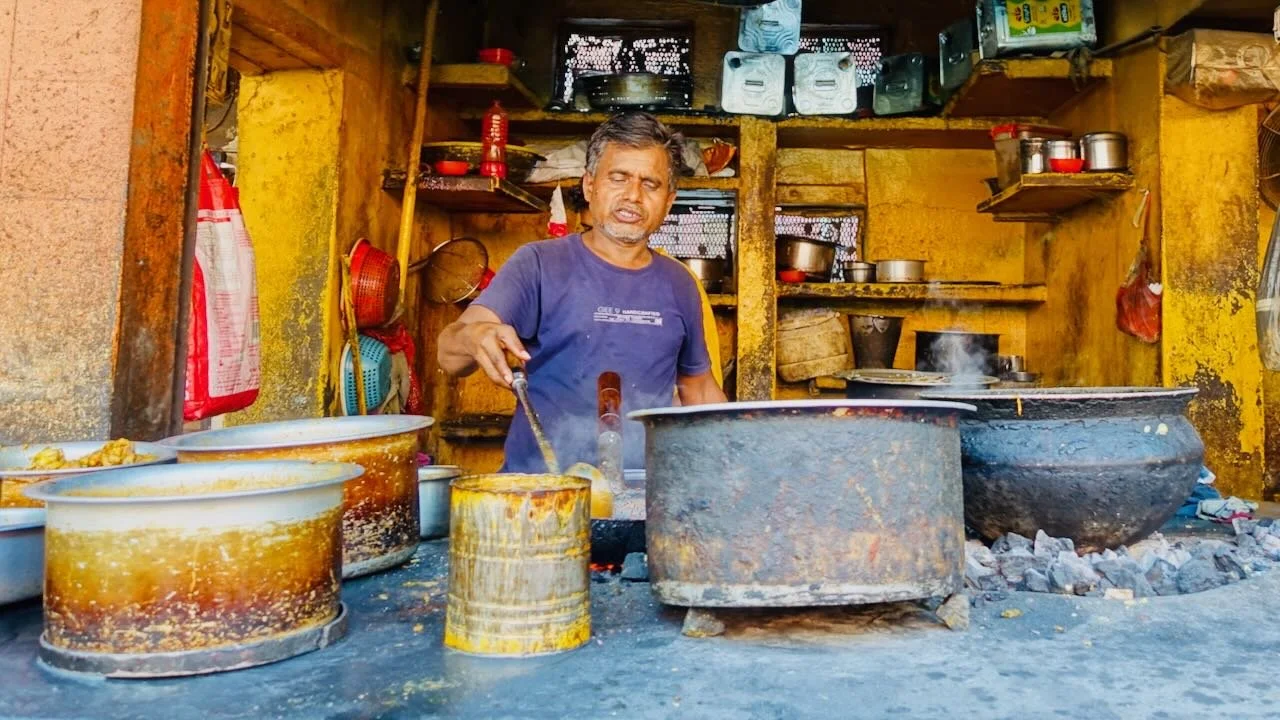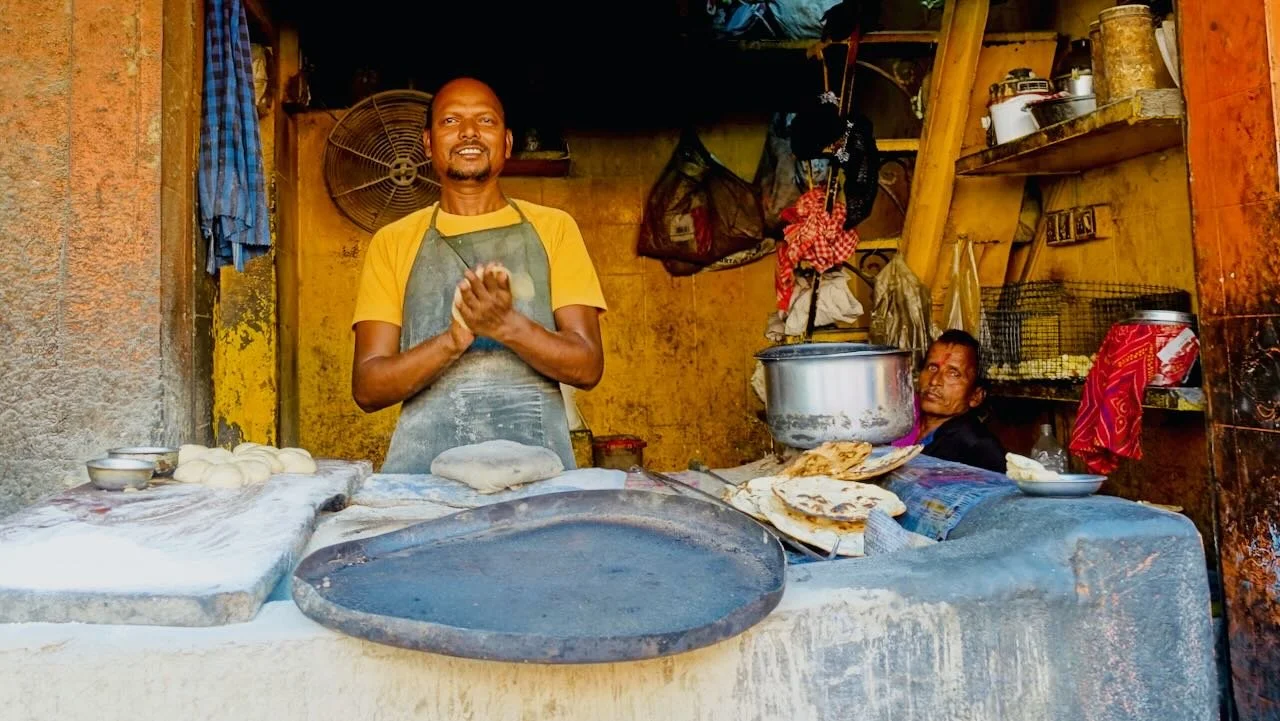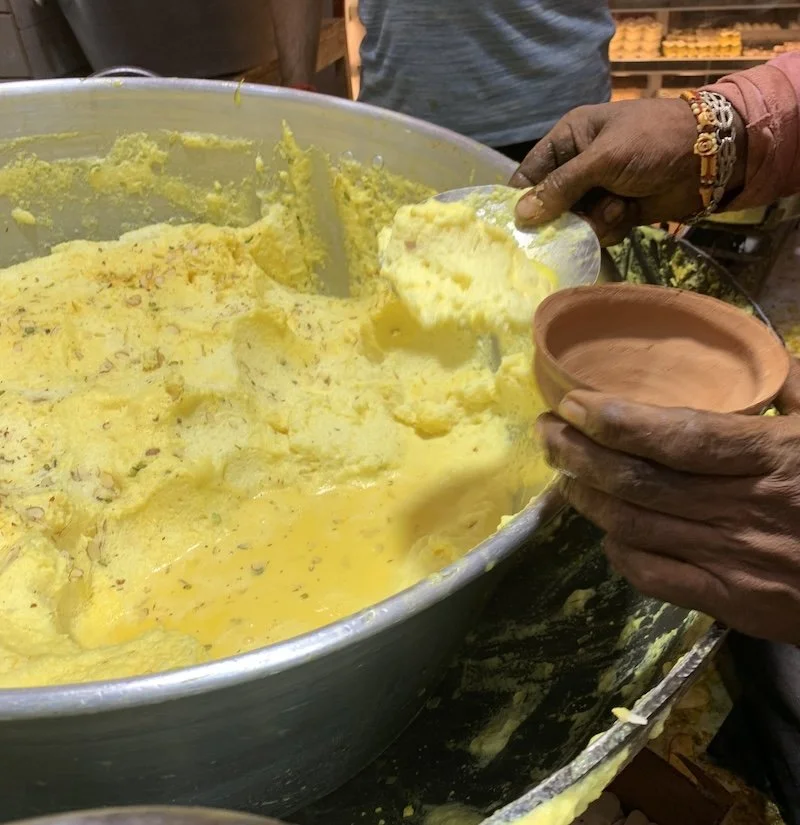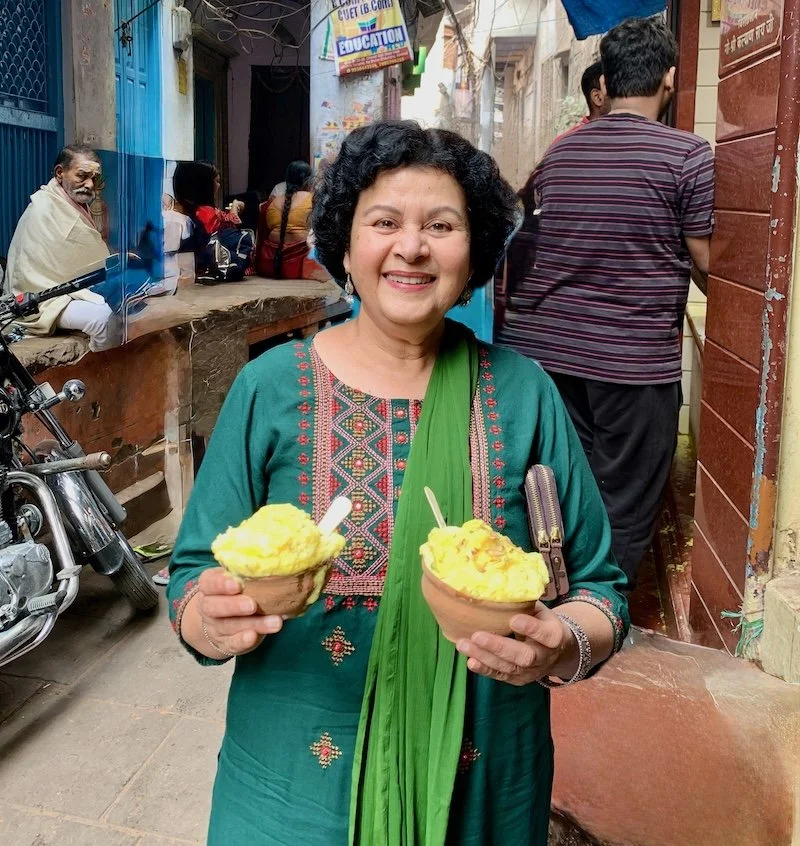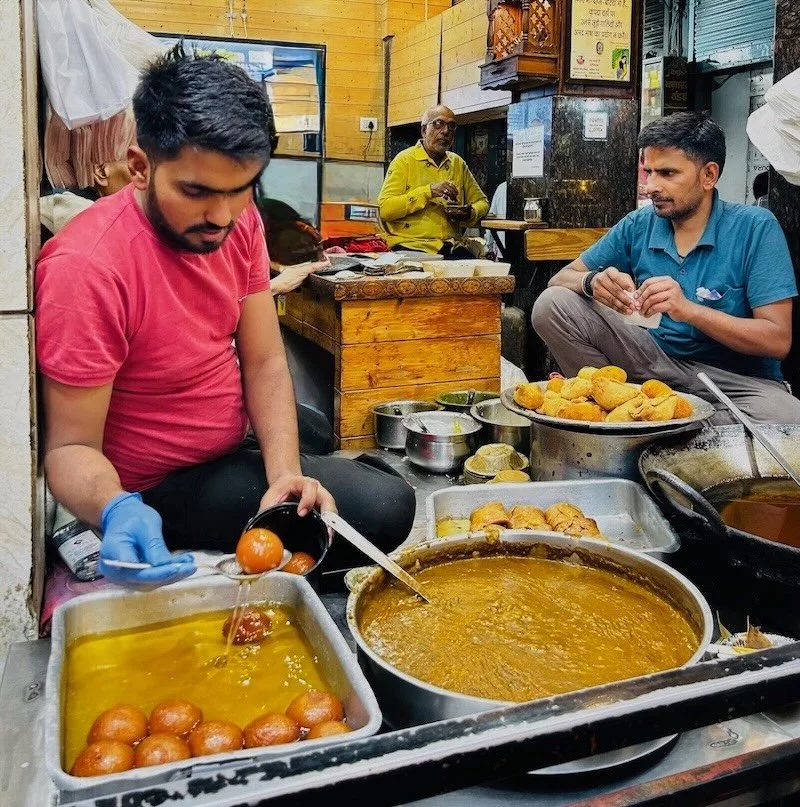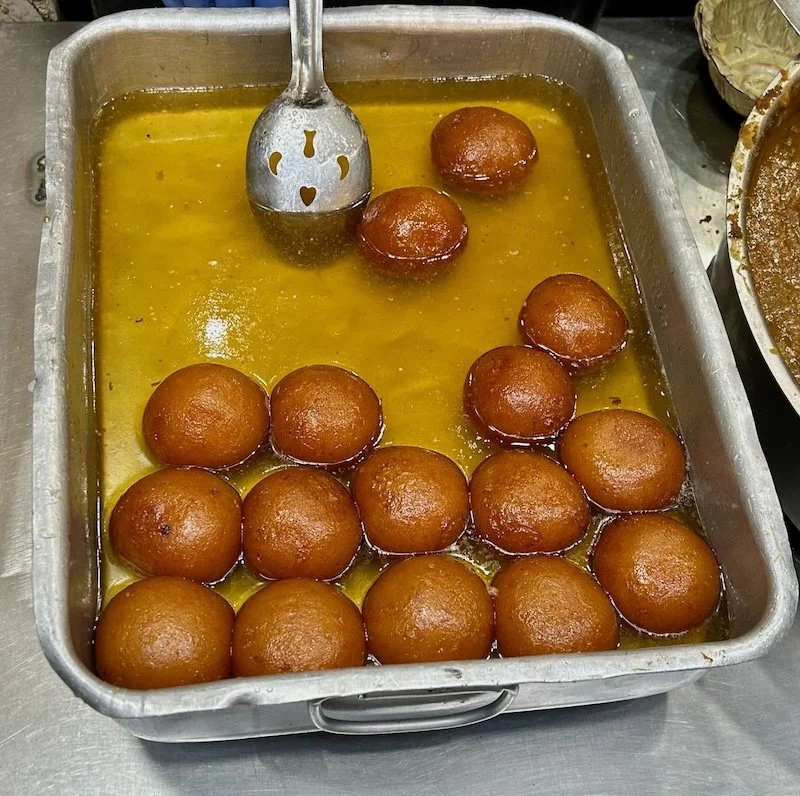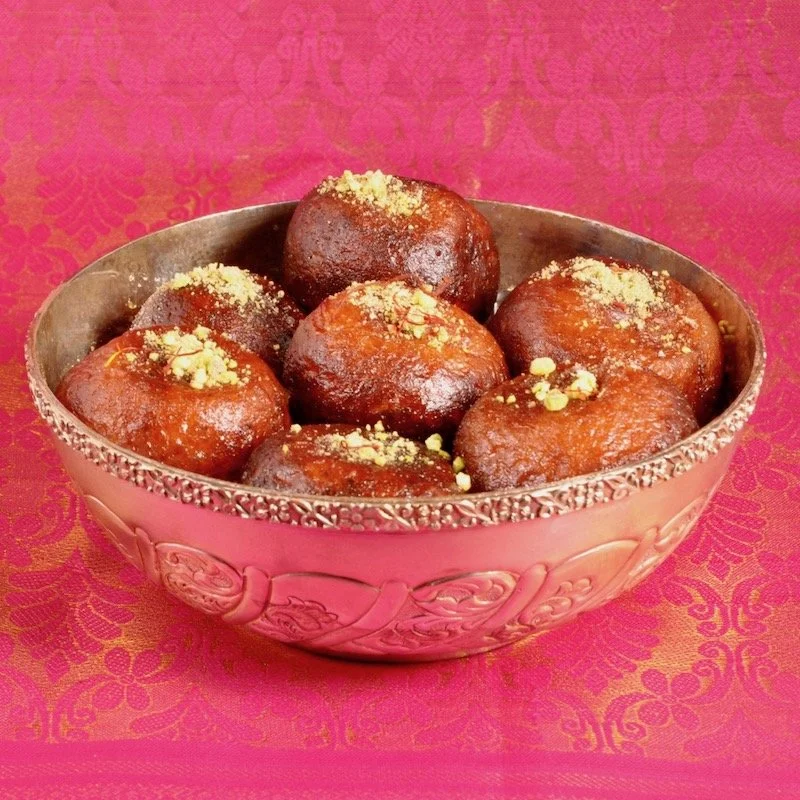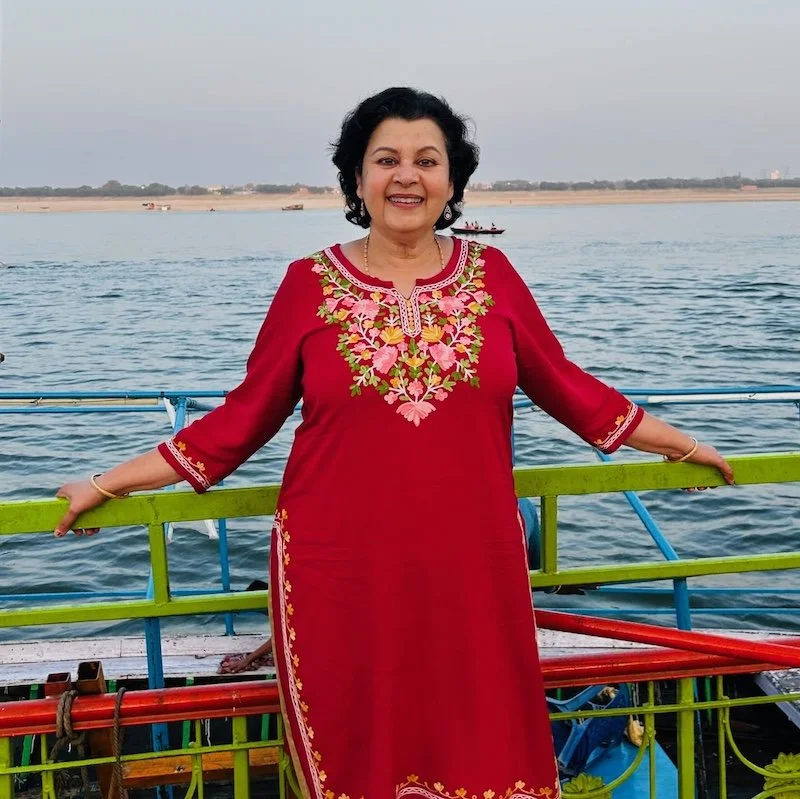Gulab Jamun In Varanasi, India
A visit to Varanasi is like stepping into living, breathing history, where timeless rituals and traditions tell their own stories. Varanasi overflows with legends - every inch of the city seems to have its own story. The city is said to have been founded by the god Shiva, who chose it as the place where he would reside on Earth. Hindus consider it the holiest place in the world and believe that anyone who dies in Varanasi finds salvation. Such faith has meant that people have lived in this place on the banks of the Ganges river for millennia, making it one of the oldest continuously inhabited cities in the world. For us, it is more than a pilgrimage to a holy city, it is where our family lives and to us it is home.
The Ganges river itself is sacred, personified as a goddess. Aeons ago people begged her to descend from heaven so that they could wash away their sins, but the might of the waters landing on the world would have destroyed it. Shiva caught the plunging river on his head in Varanasi, cushioning its fall and letting it flow gently over the land. Millions of pilgrims come to Varanasi every year to bathe in the Ganges and purify themselves, for it is a link between the world of mortals and that of the gods.
The city stretches out along the riverfront which consists of an unbroken series of ghats, steps that lead down to the river so that bathers can descend into the water. Every ghat has its own name, history and legend. The Dashashwamedh Ghat is said to be the place where the god Brahma performed a sacrifice to welcome Shiva to Varanasi, making it one of the most important ghats. The Manikarnika Ghat is located where Shiva dropped his earring (manikarnika in Sanskrit) while bathing, and being cremated here is sufficient to be assured of salvation. Funeral pyres burn here day and night.
Take a morning cruise along the river Ganges and watch life on the ghats unfold. It’s like seeing a series of paintings come to life, much like the works of award winning artist Mamta Malhotra, my sister in law, who has captured these timeless scenes on her canvases.
One of the most popular sights in Varanasi is the evening Ganga Aarti, a prayer ceremony in which priests chant sacred verses and blow conch shells while waving, in perfectly synchronized motions, large, multi-tiered lamps with blazing flames. Huge crowds assemble each evening to view the rites, either sitting on the steps of the ghats or renting boats to watch from the river. The roughly hour-long service is a mesmerizing spectacle.
Varanasi is famed for its pundits who will cast your horoscope, foretell the future, or perform any religious ceremony that you require, from blessing a newborn to conducting funeral rites. Rows of them sit under umbrellas along the ghats, waiting for clients. Devotees come from great distances to Varanasi to worship at its legendary temples such as the Kashi Vishwanath temple, sacred to Shiva, and the Sankat Mochan temple, dedicated to Hanuman. They can then spend hours wandering through the city’s maze of lanes and alleys, visiting little shrines that hold special meaning for those familiar with them.
A trip to Varanasi is incomplete until you’ve visited the oldest spice market in the city called Gola Dina Nath. The bazaar’s narrow, winding street is lined on both sides with shops that have been in the same family for generations. Here the air is perfumed with the scent of spices, the din of merchants calling out their wares and the crush of people buying them. Mounds of colourful spices in burlap sacks greet you as you enter the small shops where shopkeepers often sit on floor cushions, surrounded by bins of nuts and bags of their specially blended spice mixtures the specifics of which are always kept secret. Sip chai from clay cups as you make your decisions and return home with the best spices to transform your curries!
The galis (lanes) also provide a wonderful opportunity to buy seasonal, fresh vegetables, brought in straight from surrounding farms. Here you can watch women peeling bright green chickpeas as they wait for customers to buy them, marvel at the varieties of fresh red chilies and sample the exotic fruit peeled and cut just for you. A lot of this produce makes its way to local homes and restaurants and you may get to taste some of it at your dinner table!
These narrow galis also hold many delicious secrets. As you wander deeper, you will come across small shops selling crisp kachoris, freshly fried samosas, naan and rotis baked in hot tandoors and the famous tamatar chaat that will entice you to stop and savour some of this amazing street food. Inhale the irresistible aromas wafting from curries simmering gently in huge karhais on charcoal stoves and perhaps pack some to eat later. To try the food in these historic, atmospheric alleys, made with recipes handed down generations, surrounded by people who have eaten it for generations is an experience that you will remember for a long time. History weaves its culinary magic in these galis and you will taste it.
Varanasi is well known for its exceptional Mithai or sweets. Some of the shops are huge, showcasing irresistible Laung lata, lal Peda and parval mithai, while others specialize in only one type and are just tiny little storefronts opening onto the narrow lanes. The sheer variety is mind boggling and it is a delightful experience to taste as many as possible! We were lucky to be in Varanasi during the short season that Malaiyyo is made. This unique, creamy, frothy concoction is light as air, melts on the tongue and tastes like a rasmalai that went to heaven and hugged a cloud! It is served in small clay cups that add their own unique earthy aroma to the dish. I made sure to get two and you should too!
One of our favourite mithai is Gulab Jamun and Varanasi sweet shops do them really well. Once you’ve had a gulab jamun here, you will be spoiled for life! These deep fried balls of dough are soaked in a cardamom infused syrup making them soft, spongy and sweet. People have their favourite shops, the merits of which are debated hotly over cups of chai and more gulab jamuns. We were happy to taste test as many as we could find, you really can’t get a bad gulab jamun in Varanasi!
Home made Gulab Jamuns are easier than you think and taste wonderful. Once you’ve tried my recipe, you are going to be making them every time you have a craving! The secret to spongy, juicy gulab jamuns is to achieve a soft, slightly sticky dough, roll into smooth balls and fry over low heat so that they get properly cooked through. The best gulab jamuns are traditionally deep fried in pure ghee (clarified butter), giving them a rich, buttery aroma but you can also use any neutral oil. Then let them have a good long soak in the sugar syrup, and they will be melt in your mouth delicious! If you want to be really decadent, serve them with a dollop of my Mango Kulfi Gelato or Saffron Rosewater Ice Cream!
Gulab Jamun
1 cup each, crumbled: paneer, *khoya (thickened milk solids, see note below) or use 2 cups crumbled khoya
2 tbsp each: all purpose flour, milk
1/4 tsp each: baking soda, ground cardamom
Neutral oil for deep frying, such as canola, or use ghee
3 cups sugar
3 cups water
1/4 tsp each: saffron strands, ground cardamom
2 tbsp chopped pistachios for garnish
Place paneer and khoya in food processor and process until well blended or grate it until finely crumbled.
Transfer to a deep bowl and add flour, milk, 1/4 tsp ground cardamom and baking soda. Knead with your palms until smooth. If dough is too dry, add a few more tsp of milk. Knead for a few minutes until soft, smooth and slightly sticky. Let rest 10 min.
Lightly grease your hands with oil and shape dough into small balls, the size of a walnut. Roll them in your palms until dough balls are very smooth with no cracks.
Warm oil or ghee for deep frying, over medium low heat. Once the oil is heated, add a dough ball to make sure it holds its shape, rolling it gently to coat. Add remaining dough balls in one or two batches as many as will comfortably fit. Gently spoon some oil over them to seal tops. Let them brown lightly and expand, before turning over gently to cook evenly. Once they are dark brown in colour all over (this should take about 10-12 min), remove them to a paper towel lined plate. Reserve for later use in the recipe.
Bring sugar and water to a boil in broad bottomed saucepan, over high heat. Reduce heat to medium low and simmer for 10 min. Remove from heat, cool 10 min, then add saffron, cardamom and reserved fried gulab jamuns. Stir gently to mix. Make sure all the gulab jamuns are submerged in the syrup in a single layer. Cover and let Jamuns soak for at least 8 hours or up to overnight, shaking pan occasionally and turning them over gently to coat with syrup.
Warm them gently before serving and garnish with chopped pistachios.
Makes 14 - 16 Gulab Jamuns
* Note: Packaged khoya is available in Indian stores. It is usually kept near the paneer in the refrigerator section. Leftover khoya and paneer can be frozen.

